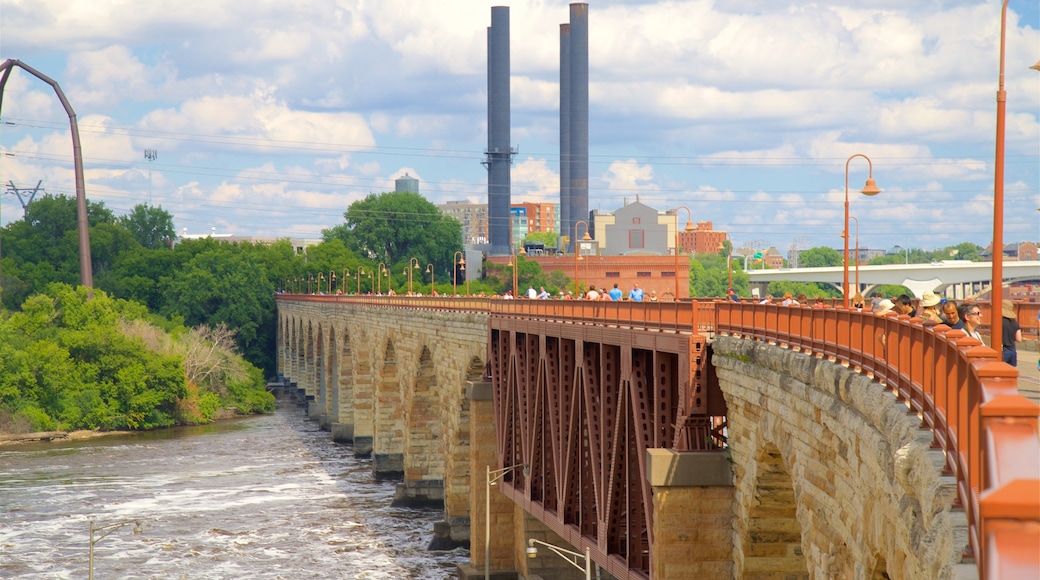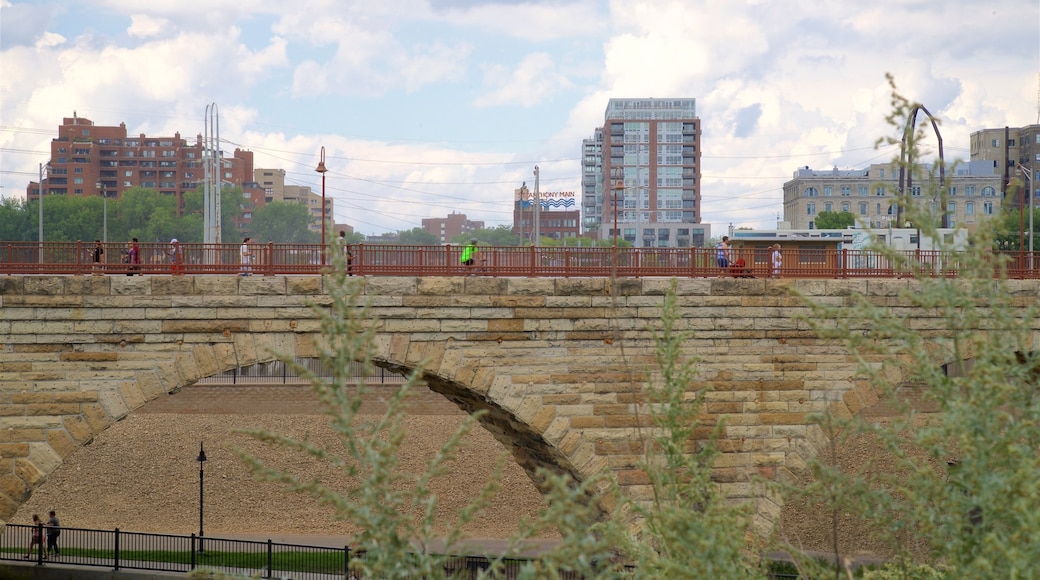The Stone Arch Bridge is a historic landmark in Minneapolis, serving as a symbol of the industrial age. Make your way across the granite and limestone bridge on foot or by bike. Admire views out over the town’s reborn riverfront district, once an industrial milling hub. See St. Anthony Falls, whose cascading water was harnessed to provide power for the milling district.
The bridge was built between 1882 and 1883 to allow trains, carrying both freight and passengers, to cross the Mississippi River to Minneapolis. Note that it was built entirely of locally sourced stone, put together using ropes, pulleys, men and horses, with three human fatalities occurring during its construction. Though this may seem shocking by today’s standards, it was at the time a relatively low death toll for a building project of its kind.
Admire views of the bridge from afar at the waterfront Gold Medal Park. Count the 23 arches along the 2,100-foot-long (640-meter) span. From here, the figures crossing the bridge appear almost ant-like.
Bike or walk across the traffic-free bridge. Though it was originally built as a rail bridge, the last passenger train to cross the structure was in 1978. In 1994, it was converted to a pedestrian trail as part of a wider urban renewal project.
As you amble across, pause at the bridge’s edge to absorb the views. Gaze down at the roaring Mississippi River and spot the rushing St. Anthony Falls. The energy these falls generated was once used to power the city’s lumber and flour mills, which were located alongside the river. From the bridge, see the remnants of these mills, some ruins and some converted into offices and apartments. Read placards placed along the bridge to find out more about the city’s milling heritage.
Stone Arch Bridge connects Mill Ruins Park with Father Hennepin Bluff Park.Access to the bridge is free. Come in June to participate in the Stone Arch Bridge Festival, which showcases musicians and artists.













